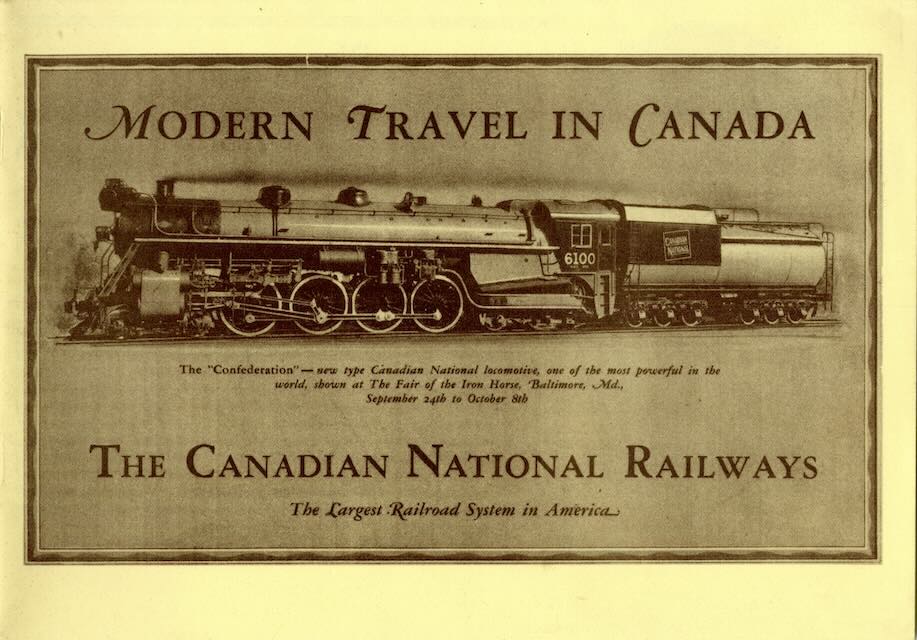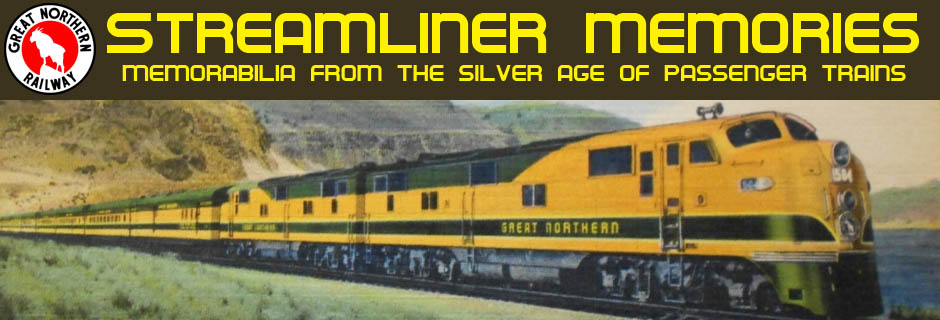The Baltimore & Ohio celebrated its centennial in 1927, the same year that Canada celebrated sixty years of confederation. B&O generously invited other railroads to participate in its Fair of the Iron Horse, which was attended by more than 1.3 million people between September 24 and October 15. CN responded by sending its latest locomotive, a 4-8-4, the first of what it called the “Confederation” class of steam locomotives.

Click image to download a 14.9-MB PDF of this 32-page booklet.
Most of the 36 North American railroads that owned 4-8-4s called them “Northerns” out of respect for Northern Pacific, which in 1926 was the first railroad to have such a locomotive built. NP was soon followed by the Lackawanna and Santa Fe, which received their first 4-8-4s in early 1927. Canadian National was the fourth railroad to own a 4-8-4 as number 6100 was completed in June 1927, in plenty of time for B&O’s Maryland fair.
Here is CN locomotive 6100 performing at the Fair of the Iron Horse. If you see any Native Americans in this video, they are Blackfeet Indians brought to the fair by the Great Northern Railway.
Eventually, CN would own 160 4-8-4s, almost twice as many as any other railroad. That’s not even counting the 43 4-8-4s owned by CN subsidiary Grand Trunk. Curiously, the second-largest fleet of 4-8-4s was not Santa Fe’s 65 locomotives or Southern Pacific’s 74 but Rock Island’s 85. CN competitor Canadian Pacific only purchased two 4-8-4s, preferring to haul passenger trains with 4-6-2s and 4-6-4s over flat lands and 2-10-4s over the mountains. The above video shows that CP brought one of its latest 4-6-2s to the fair, but it was anticlimatic when it followed the 6100 on parade.
This booklet, copies of which were handed out at the fair, is actually a 1972 reprint by the Canadian Railroad Historical Association. I don’t usually show reprints here, but this one is more than 50 years old, making it a railroad artifact on its own merits. The photos are somewhat muddy due to poor quality reproduction, but the important details are still discernible.

Canadian National’s “oil-electric” on display at the Fair of the Iron Horse.
The 6100 wasn’t the only locomotive CN brought to the fair. The booklet also describes an oil-electric (meaning Diesel) motorcar that it predicted would be “the challenger of steam.” In front of a passenger compartment, the car contained a huge six-cylinder, four-cycle 300-horsepower engine, which turned a generator that powered electric motors. The motorcar had traveled from Montreal to Vancouver, nearly 3,000 miles, in just 67 hours (an average of 44 mph), compared with the 98-hour schedule of the fastest steam trains of the day.
CN effectively admitted that the oil-electric was not yet perfected, noting that even for branchline service it was a “problem yet in the course of solution.” The solution would come seven years later in the form of the Burlington Zephyr and its compact, 600-hp two-cycle Diesel engine. But CN was justifiably proud to show off its innovative motorcar as well as its Confederation locomotive.
